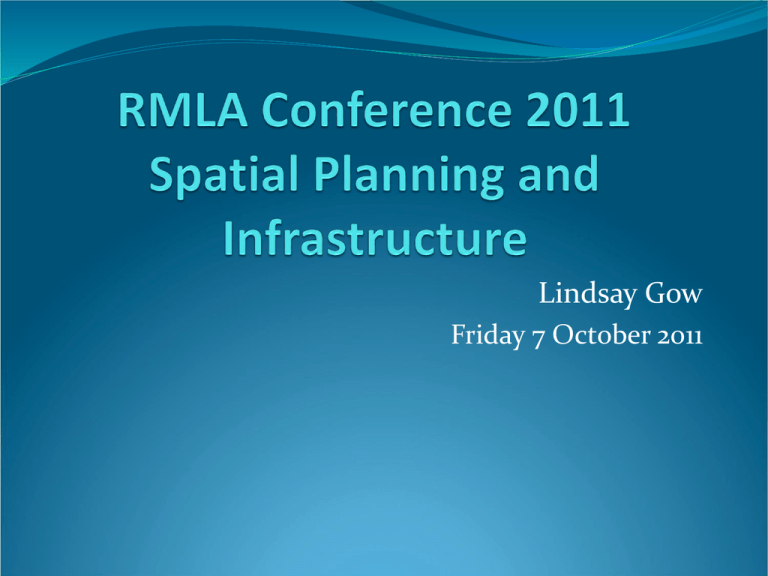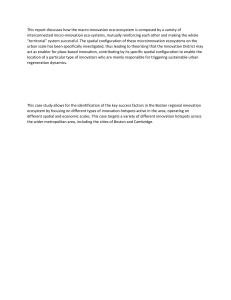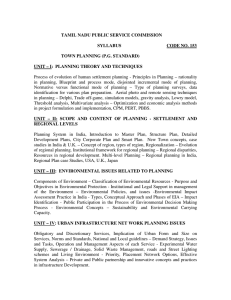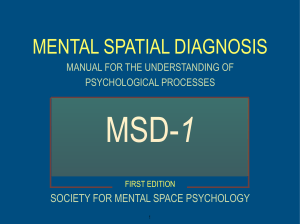Document
advertisement

Lindsay Gow Friday 7 October 2011 Spatial Planning: What is it? Strategic direction Integrate social, economic, environmental and cultural objectives High level development strategy Enable location and timing of critical infrastructure, services and investment Growth/development direction, type, mix and sequence Protection and development of recreation, ecology, landscape, heritage Environmental constraints Policies, priorities, land allocations, programmes and investments and how resources will be provided Spatial Planning: Scale and Locus Upper North Island development plan(Whangarei, Auckland, Hamilton, Tauranga)? Economic development and infrastructure, (especially transport nodes/corridors), community needs and environmental assets/protection Competition or cooperation? Just planning, or planning for investment Urban scale development and spatial planning The Crowded Planning Landscape National Regional LTA / LTMA LGA RMA Regional Land Transport Strategies and Programs Regional Growth Strategies Regional LTCCP Regional Policy Statement and Plans Transport Action Plans Sub-regional growth Strategies TA’s LTCCPs / Annual Plans District Plans Structure plans GPS Local Investing National Land Transport Programme (NLTP) (NZTA’s Investment Programme) What’s needed and who plays Uber multi regional plan, with government involvement and commitment, especially for big, lumpy infrastructure Regional/urban spatial plans with binding, legal force on central and local government A formal, structured and transparent process Business, iwi and community involvement and redress (via independent review) Firm, clear direction, but not fine grained prescription Flexibility and review: multiple pathways/options Build from existing strategies: Auckland Regional Growth; Future Proof (Hamilton); Smart Growth (BoP) Meaningful, structured conversations leading to commitments











